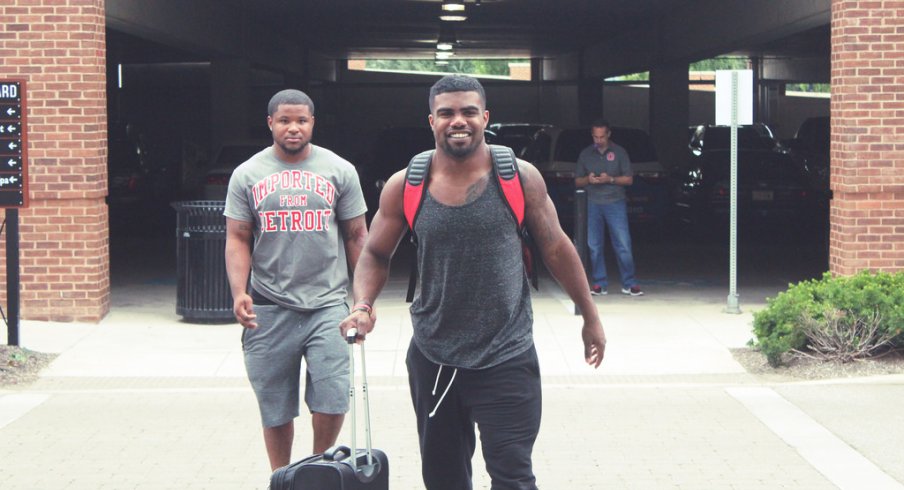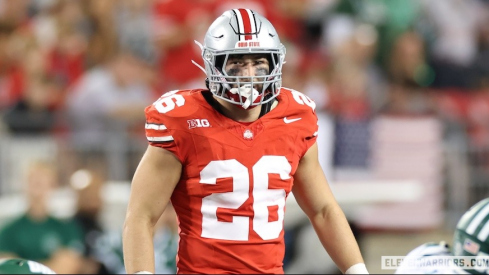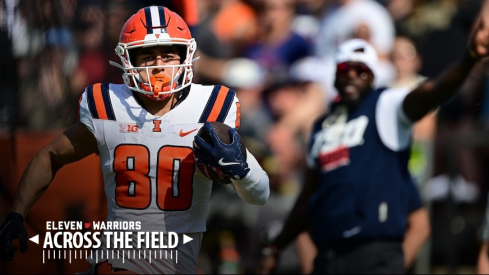Washington Redskins' running back Matt Jones has been the talk of the National Football League – and fantasy leagues – for the last several days. The rookie running back from Florida received some glowing reviews in training camp and his solid preseason carried over into week two of the NFL season as the 6-foot-2, 230-pound back rushed for 123 yards and two scores against the Baltimore Ravens.
Jones, a bruising back with speed to burn, fits the mold of an every-down NFL tailback – even if he is currently splitting carries with veteran Alfred Morris. Jones definitely isn't the type of player that comes to mind when thinking about the Urban Meyer regime at Florida. Players like Chris Rainey and Jeff Demps became the norm in the Gators' backfield. Explosive college players? Absolutely. Guys you want to carry the rock 20+ times a game and help convert on third down and one? Probably not.
Given his success at Florida, it's difficult to criticize Urban Meyer for his schemes and recruiting. Matt Jones was offered by the Gators shortly after Meyer returned from his leave of absence and would ultimately commit to new coach Will Muschamp. An article documenting the Jones' commitment expresses one of Meyer's biggest criticisms at Florida: his inability to land "bigger" running backs.
For six years, Urban Meyer searched for it. He looked high and low. East and west.
Still, one of the best recruiters in college football couldn’t haul in the elusive big running back to save his life while at Florida.
The Meyer Era at the University of Florida is known for many things—speed, special teams and national championships all come to mind. One thing that it really didn't feature was more of a traditional tailback. Meyer's spread offense obviously isn't some sort of pro-style approach that you see at Alabama or USC, but since his arrival in Columbus, he's shown that these up-tempo systems can absolutely feature more of a bruiser at running back. While leading the Gators, that short-yardage ground attack was typically led by the quarterback – most notably Tim Tebow.
A lot has changed over the last few years, and these changes have certainly benefited the Ohio State running game. Let's take a look at how running back recruiting has evolved since Meyer's days at Florida.
STRUGGLES AT THE SWAMP
Meyer's tenure at Florida – from a recruiting standpoint – began much like his time at Ohio State. In December of 2004, he was announced as the new Gators' head coach, essentially giving him just a couple months to put together a recruiting class. Fast forward to February 2006 and his first "full" class in SEC country checked in at the top of the national recruiting rankings.
The class included a pair of running backs – Chevon Walker and Mon Williams – who saw little playing time before transferring out. Several athletes also signed with the Gators, including Brandon James who would go on to be used as an all-purpose type of player. Checking in at just 5-foot-7 and 167 pounds, James carried the ball 61 times in his college career while making his biggest impact on special teams. C.J. Spiller, another diminutive back, surprised many by spurning the Gators and signing with Clemson.
The 2007 class saw another running back duo sign with the Gators. Johnny "Bo" Williams was one of the bigger backs that pledged to play for Meyer, but the 6-foot, 200-pounder never saw the field; ultimately transferring to Iowa State before running into even bigger problems. Chris Rainey's career was much more successful. The 5-foot-9, 160-pound tailback rushed for over 2400 yards in his career and was a part of the 2009 national championship run.
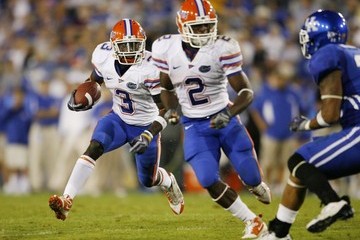
Meyer's final few recruiting classes were limited at the position, adding Jeff Demps in 2008 and Mike Gillislee in 2009. Demps, a 5-foot-7, 162-pound speedster who would go on to win a silver medal at the 2012 Summer Olympics, ended his career with stats that mirrored those of Rainey – 2470 yards rushing with 23 touchdowns. The Gators also were in pursuit of Carlos Hyde (Naples, FL) who, as we all know, would end up signing with Jim Tressel and the Buckeyes.
Mike Gillislee would go on to have a successful career under both Meyer and Muschamp. The 6-foot-1, 205-pounder rushed for over 2000 yards and scored 20 touchdowns while suiting up for the Gators. After Tebow's departure, he and transfer Emmanuel Moody worked to fill the void in the power running game. Gillislee was taken in the fifth round of the 2013 NFL Draft and is currently on the Arizona Cardinals' practice squad.
TURNING THE TIDE IN COLUMBUS
When Urban Meyer was announced as the new head coach at Ohio State, there weren't many concerns from Buckeye fans. One of the best coaches in college football was coming to Columbus, what was there to worry about? The questions seemed to be about his health and how successful his running game would be in the Big Ten. After nearly four years on the job, it's safe to say those questions have all been answered.
Running back recruiting has been off the charts since Meyer's arrival and played a pivotal role in last season's championship run. The Buckeyes are landing a lot of the speedy players that Meyer coveted at Florida; more importantly, they have also been successful in landing some of the bigger, every-down type of running backs.
Ohio State's roster currently features four running backs that are 215+ pounds. Warren Ball and Bri'onte Dunn – both juniors – committed before Meyer's arrival, but he had to fight off Michigan to retain Dunn. Everyone knows about Ezekiel Elliott, one of the top backs in the nation who signed with the Buckeyes in 2013. True freshman Mike Weber is another potential every-down back who was rapidly moving up the depth chart before a knee injury. The 5-foot-10, 215 pounder will look to make his mark in the weeks to come.
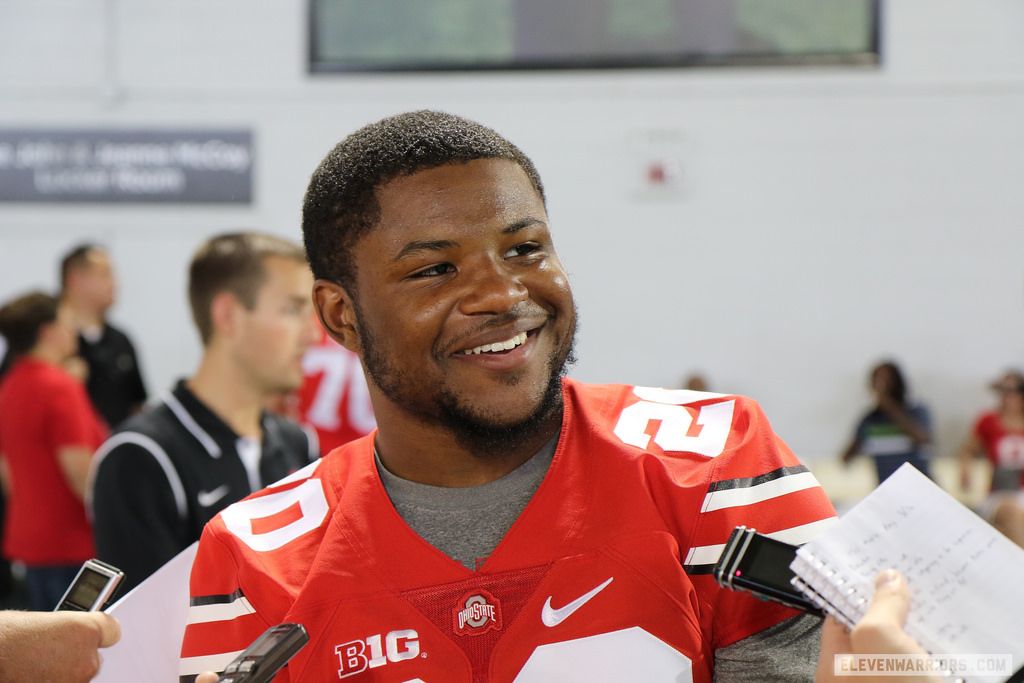
So what about the future at running back? It looks just as bright as ever. Kareem Walker, the country's top back for 2016, has been committed since January; electing to play for Meyer over every other coach in America. The 6-foot-1, 210-pounder is looking to enroll early and could battle Weber for playing time next season. DeMario McCall will be joining Walker next year. While McCall is more reminiscent of the backs we saw at Florida – checking in at 5-foot-11 and 180 pounds – the combination of he and Walker will be tough for the Big Ten to handle.
Even further down the road? Akron's Todd Sibley (Hoban) has been committed to the Buckeyes since April. Already checking in at 5-foot-11 and 205 pounds as a junior, Sibley is currently the lone running back commit for 2017. Things also seem to be trending in the right direction for Georgia's Trey Sermon. At 6-foot-1 and 206 pounds, Sermon is the nation's fourth-ranked tailback. 2018? How about Westerville South's Jaelen Gill? Gill could end up at running back, wide receiver, or possibly H-back. While he currently checks in at around 6-foot and 170 pounds, you have to remember the kid is only a sophomore.
